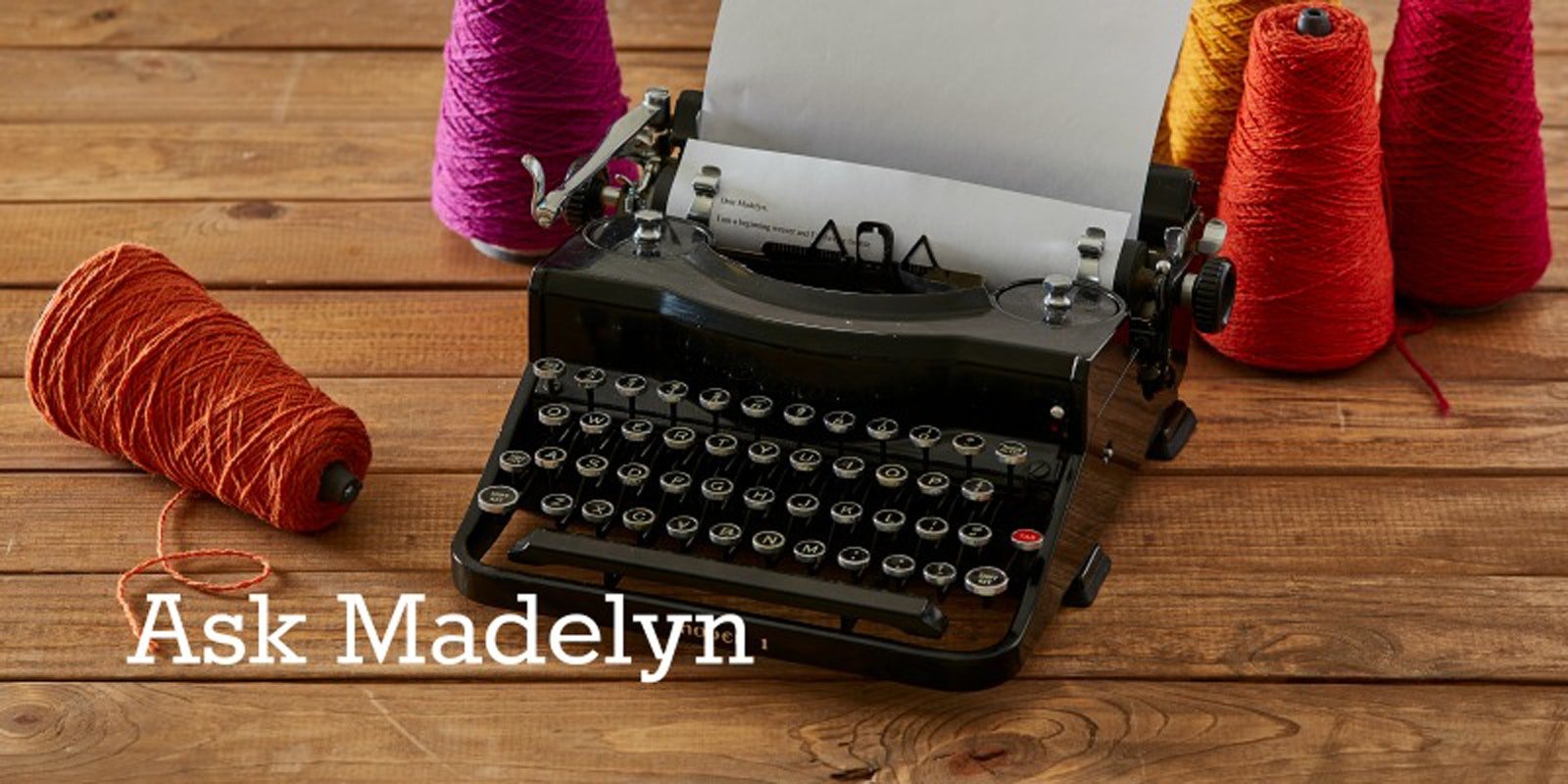Hi Madelyn!
I am blending two drafts into one, which I would like to use for a set of towels. I have two questions that I have not been able to find answers to, and I am hoping you can help me. I know that the two drafts to be blended need to have the same number of ends and that adjustments may be needed to make them the same. I am not quite sure how to alter an overshot draft to fit the bill. For example, I want to blend Hazelwood by Bertha Gray Hayes with a 10-end huck. Hazelwood has 28 ends instead of the necessary 30 (the 10-end huck draft times 3) so would need an additional two. What would be the best way to adjust it? I added 2 threads to the center block. Will an equivalent adjustment be necessary in the treadling?
This second question also came up as I looked for an overshot draft to blend with a 10-end huck draft. In “Hoosier Huck Towels,” from the May/June 2020 Handwoven, pages 34–36, it says that the draft for Hoosier Tallyho doesn’t require tabby. In parts of the draft, though, the warp floats over 12 weft picks! The indication that an overshot draft would not require tabby is such a surprise, and I am not at all confident in my understanding. I would so appreciate your help with these two questions!
—Deborah
Hi Deborah!
I am happy to answer your questions!
Your first question: Adding two threads to the center block was a perfect way to get to 30 ends (to match the 10-end huck threading, times three). Most of the time, to change an overshot draft, you take out or add two threads to as many blocks as needed (choosing blocks in symmetrical positions to maintain the symmetry of a design when you are working with more than one).
The treadling for each blended draft is determined independently. Once you have figured out what treadles to use for the overshot blocks, you can weave each block the number of times needed to weave the blocks to square. With your two threads added to the center block in the threading, you would, in theory, add two pattern picks to the center block in the treadling (to make the center block square). The blended huck draft would be treadled as for the original huck draft.
As to your second question: Overshot is a structure that was developed (we can only guess) through a desire to increase float lengths in twill, threading 1-2-1-2 instead of just 1-2. The problem with adding threads to each twill pair (1-2, 2-3, 3-4, 4-1) is that the cloth becomes structurally unstable. Thus, tabby is added to form a ground cloth (and overshot was born). When the block pairs are very short, as with many miniature designs, the draft can be woven without a tabby (essentially, you are then weaving twill). You would not be able to use the same “pattern” treadle over and over again the way you do in overshot, however. You would weave the draft using the treadles in twill (point-twill, rosepath twill, etc.) order, one at a time. See the difference between the overshot treadling for Diane Pigg’s Hoosier Huck towels and the twill treadling (without tabby) on the same draft.
Let me know more, and I hope this helps!
—Madelyn

